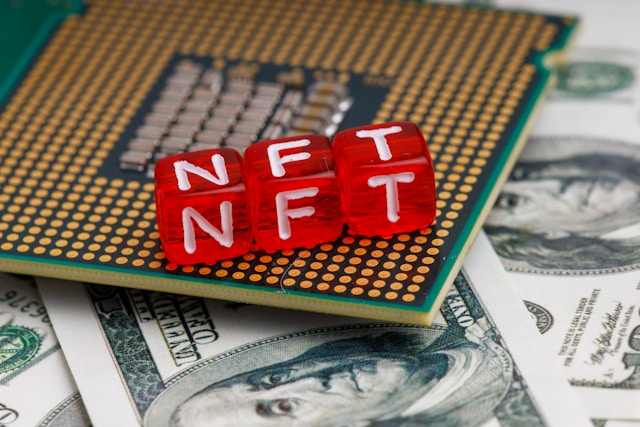
- October 5, 2023
- Personal Finance Advisor
- 0
Gold Exchange Traded Funds (ETFs) are a type of investment fund and exchange-traded product, traded on stock exchanges. Gold ETFs offer investors an efficient way to implement strategies for investing in gold without owning the physical asset. These funds are designed to track the price of gold, meaning the value of a gold ETF rises and falls with the price of the commodity.
Investors buy shares of the ETF, and the fund uses that money to buy gold. The gold is then held by a custodian on behalf of the fund. The primary appeal of gold ETFs is that they allow investors to gain exposure to the price of gold without the inconvenience of storing physical bars or coins. They also provide a level of diversification, as they are not tied to traditional asset classes like stocks or bonds.
Gold Exchange Traded Funds (ETFs) operate similarly to mutual funds, but they are traded on stock exchanges, much like individual stocks.
When you invest in a gold ETF, you’re not buying physical gold. Instead, you’re buying shares in a fund that holds gold assets. The price of these shares generally tracks the price of gold, allowing investors to gain exposure to the gold market without the need to store or insure physical gold.
The ETFs are managed by financial institutions that buy and sell gold based on the fund’s demand. These institutions ensure that the price of the ETF shares corresponds closely to the price of gold.
Therefore, investing in gold ETFs can be a convenient and cost-effective way to incorporate gold into your investment portfolio. However, it’s important to understand that like all investments, gold ETFs come with their own set of risks.

The Benefits of Investing in Gold ETFs
Investing in Gold Exchange Traded Funds (ETFs) comes with several benefits.
Firstly, Gold ETFs provide a practical way to own gold without the need to physically store it. This eliminates the risks and costs associated with storage and insurance.
Secondly, they offer high liquidity, meaning you can buy or sell your shares at any time during market hours at the current market price.
Thirdly, Gold ETFs allow for diversification of your investment portfolio. Gold often moves inversely to the stock market, providing a hedge against market volatility.
Lastly, investing in Gold ETFs is straightforward and accessible. You can buy them just like you would buy shares of a company, through a brokerage account. Therefore, Gold ETFs provide an efficient and cost-effective way to invest in gold, making them an attractive option for many investors.
Potential Risks of Gold ETFs
Investing in gold ETFs, like any investment, carries certain risks that investors should be aware of. One of the primary risks is the fluctuation in gold prices. Gold prices are influenced by a variety of factors, including economic conditions, geopolitical events, and market speculation.
If gold prices fall, the value of the gold ETF will also decrease. Another risk is the possibility of the ETF provider’s insolvency. If the provider goes bankrupt, it could impact the value of your investment.
Additionally, gold ETFs may not always accurately reflect the price of gold due to management fees or tracking errors. Lastly, while gold is often viewed as a hedge against inflation, it doesn’t generate income like stocks or bonds. Therefore, during periods of low inflation or deflation, gold ETFs may underperform compared to other investments. It’s crucial for investors to understand these risks before investing in gold ETFs.
Step-by-Step Guide to Investing in Gold ETFs
Investing in Gold ETFs can be a strategic move for diversifying your portfolio. Here’s a step-by-step guide to help you get started.
First, educate yourself about the basics of gold ETFs, their benefits, and potential risks. Understanding the market is crucial before making any investment.
Second, choose a reliable trading platform or brokerage that offers gold ETFs. Look for platforms with low fees, good customer service, and easy-to-use interfaces.
Third, research different gold ETFs. Each ETF has its own set of characteristics, including the type of gold assets it holds, its management style, and its expense ratio.
Fourth, decide how much you want to invest. This should be based on your financial goals, risk tolerance, and investment timeline.
Lastly, buy the gold ETF. Monitor your investment regularly and adjust your strategy as needed based on market trends and your financial goals.
Comparing Top Gold ETFs
Comparing top gold ETFs is a crucial step for potential investors. This comparison allows investors to understand the performance, management fees, and the specific gold assets each ETF holds.
Some of the top gold ETFs in 2024 include the SPDR Gold Shares, iShares Gold Trust, and the VanEck Vectors Gold Miners ETF. The SPDR Gold Shares is known for its high liquidity and direct investment in physical gold.
The iShares Gold Trust, on the other hand, offers lower expenses but also invests in physical gold. The VanEck Vectors Gold Miners ETF is unique as it invests in stocks of companies involved in the gold industry, providing a different exposure to the gold market.
Each of these ETFs has its own advantages and risks, and the choice depends on the investor’s goals, risk tolerance, and investment strategy.
Expert Advice on Gold ETF Investments
Expert advice on gold ETF investments can be invaluable for both novice and seasoned investors. Professionals in the field often emphasize the importance of understanding the mechanics of gold ETFs before investing. They suggest that investors should consider their risk tolerance, investment goals, and market conditions.
Experts also recommend diversifying your portfolio to mitigate risk, and gold ETFs can be an effective way to achieve this. They often highlight the liquidity and ease of trading as key advantages of gold ETFs. However, they also caution about potential risks such as market volatility and the indirect nature of the investment, as you’re not owning physical gold.
It’s also advised to keep an eye on management fees, as they can eat into your returns. Lastly, experts often suggest a long-term investment strategy for gold ETFs, as gold is typically viewed as a hedge against inflation and currency fluctuations.
Reviews of the Best Gold ETFs
Investing in gold ETFs can be a strategic move for diversifying your portfolio. However, not all gold ETFs are created equal. Some of the best gold ETFs include the SPDR Gold Shares (GLD), iShares Gold Trust (IAU), and the VanEck Vectors Gold Miners ETF (GDX).
GLD is one of the largest and most popular gold ETFs, known for its high liquidity and direct investment in physical gold. IAU, on the other hand, is favored for its low expense ratio. GDX is unique as it invests in gold mining companies, offering a different risk and reward profile.
Each of these ETFs has its own advantages and potential drawbacks, and the choice depends on individual investment goals, risk tolerance, and market outlook. It’s crucial to review each fund’s performance, management, and costs before making an investment decision.
Current Market Trends in Gold ETFs
Current market trends in Gold ETFs are a crucial aspect to consider when planning to invest in this sector. In recent years, Gold ETFs have gained significant popularity due to their ability to provide investors with exposure to gold prices without the need for physical storage.
As of 2023, the trend towards investing in Gold ETFs continues to rise, driven by factors such as economic uncertainty and the desire for portfolio diversification. Investors are increasingly turning to Gold ETFs as a hedge against inflation and currency fluctuations.
Moreover, advancements in technology have made it easier for individuals to invest in these funds, further propelling their popularity. However, like any investment, Gold ETFs are subject to market risks, and their performance can be influenced by various factors, including changes in gold prices, demand and supply dynamics, and global economic conditions.
Therefore, it is essential for investors to stay updated with the current market trends and make informed decisions.
Understanding Gold Prices and Their Impact on ETFs
Understanding gold prices and their impact on ETFs is crucial for any investor considering this type of investment. Gold prices are influenced by various factors, including global economic conditions, inflation rates, and geopolitical events.
When gold prices rise, the value of gold ETFs typically increases as well, as these funds are backed by physical gold or gold contracts. Conversely, when gold prices fall, the value of gold ETFs usually decreases. However, it’s important to note that gold ETFs can also be affected by other factors such as management fees and the overall performance of the stock market.
Therefore, while gold prices play a significant role, they are not the only determinant of a gold ETF’s performance. Investors should monitor gold prices but also consider other market indicators and trends when investing in gold ETFs.




































